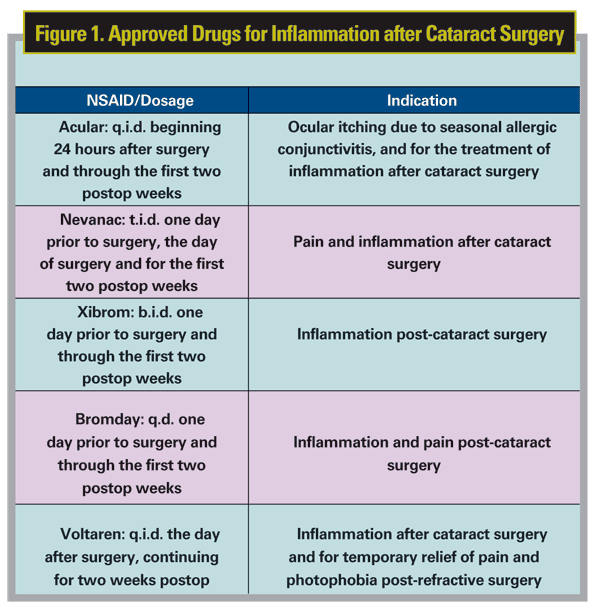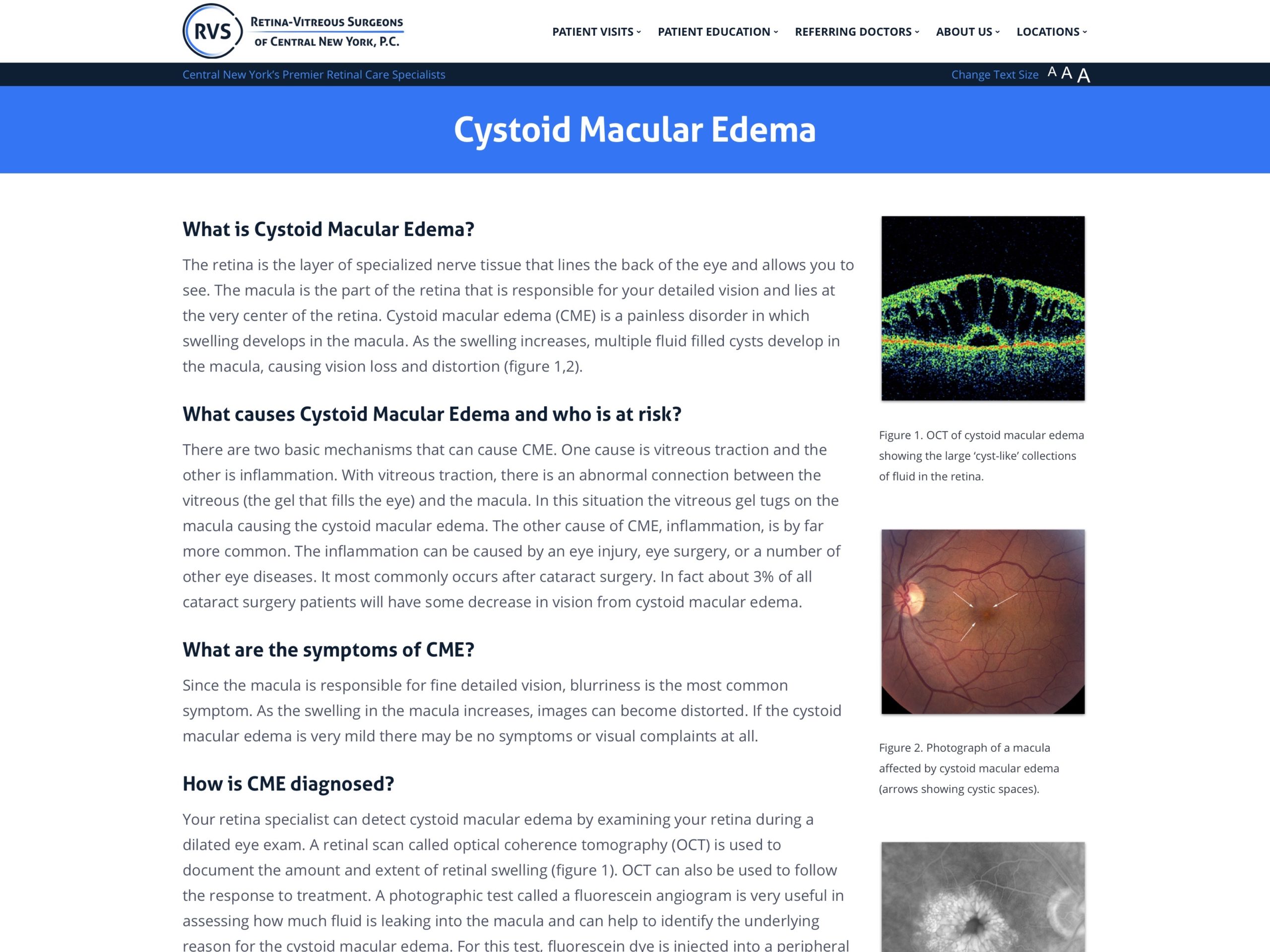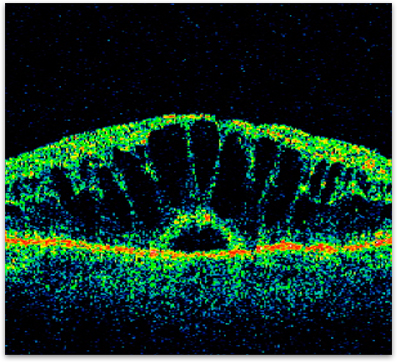Peripheral vision is usually not affected by this condition. Cystoid macular edema CME following cataract surgery IrvineGass syndrome was originally described by Irvine 1 in 1953 and demonstrated angiographically in 1966 by Gass and Norton.

Do Your Homework Before Treating Cme
CME after uncomplicated cataract surgery in low-risk patients tends to resolve spontaneously 5 25 26 and no evidence suggests that perioperative anti-inflammatory treatment affects incidence or long-term visual outcomes.

. CME TREATMENT Dr Wielders and colleagues also conducted a systematic review investigating the optimal pharmacological treatment of. Cystoid macular edema is the most common cause of decreased vision in patients following cataract surgery occurring much more frequently than either retinal detachment or endophthalmitis. PCME may occur even in the absence of complications and risk factors.
Several clinical trials have examined anti-inflammatory treatments for the prevention of cystoid macular edema CME after uneventful cataract surgery but the optimal preventive regimen is still up for debate. Im actually surprised and very pleased to see improvement so soon. How we treat this problem has changed over time.
Additionally advances in cataract surgery such as more efficient phacodynamics and reduced time of surgery and the. TreatmentPrognosis of Cystoid Macular Edema. Pseudophakic cystoid macular edema CME also known as Irvine-Gass syndrome is one of the most common causes of visual loss after cataract surgery12 Phacoemulsification and small incision cataract surgery have significantly reduced the incidence of pseudophakic CME but because cataract surgery is the most commonly performed surgery in the United.
Clinically significant CME affects between 01 and 24 of healthy eyes but up to 31 of patients with diabetes. A smaller percentage up to 20 will persist for up to 5 years. This condition is typically associated with ocular inflammation which can be precipitated by cataract surgery a process known as.
This usually occurs about two to eight weeks after cataract surgery. About 1-3 of those who have cataract extractions will experience decreased vision due to CME usually within a few weeks after surgery. However the resolution of the issue under this regimen was variable and many.
It can occur after uncomplicated surgery in patients with otherwise healthy eyes after complicated surgery or after surgery in patients with ocular diseases such as uveitis or diabetic retinopathy. About half of the cases will regain normal vision in about 6 months. Cystoid macular edema CME is a common problem after cataract extraction.
Diagnosed with recalcitrant CME defined as less than a 15 decrease in CRT after at least 6 weeks of topical non-steroidal anti-inflammatory drug. Ray Irvine Jr MD in 1953 and later elucidated with fluorescein angiography by J. Pseudophakic cystoid macular edema PCME.
Pseudophakic cystoid macular edema also known as Irvine-Gass syndrome was first reported by A. However one might need to treat the diabetic macular edema. Treatment for cystoid macular edema depends on the severity of the condition and the individual patient and may.
These cystic changes arise due to fluid accumulation from breakdown of the perifoveal capillaries. Vision may also be distorted with straight lines appearing wavy and may be tinted pink as well. Side effects of medications.
The investigators reported that patients treated with a combination of a topical NSAID and corticosteroid had a lower risk of developing CME after cataract surgery than patients treated with either drug alone. Intraoperative complications including capsule rupture vitreous loss and iris trauma are associated with a higher risk for PCME. 3 4 Cystoid spaces.
2 This condition involves accumulation of excess fluid within the macula due to leakage from dilated peri-foveal capillaries. Pseudophakic Cystoid Macular Edema. Cystoid macular edema CME is a common complication that can affect visual acuity after cataract surgery.
Cystoid macular edema after cataract surgery in a patient with previous severe iritis following argon laser peripheral iridoplasty. Ocular inflammation a frequent occurrence after cataract surgery can lead to numerous serious complications including cystoid macular edema CME. It most commonly occurs after cataract surgery.
Has had cataract surgery in the study eye with posterior chamber or anterior chamber intraocular lens implantation. IrvineGass syndrome is one of the most common causes of visual impairment after cataract surgery. Usually vision loss from cystoid macular edema is temporary.
Although CME was clinically recognized and described over 50 years ago much remains unknown about it. He was also undergoing treatment with a topical prostaglandin analog for primary open-angle glaucoma which he stopped prior to surgery and recently restarted. If the cataract surgery exacerbated a patients diabetic macular edema one can start treatment with anti-inflammatory drops.
The Cochrane Library Medline and Embase databases were searched and all randomized controlled trials RCTs that compared at least 2 pharmacologic strategies for CME. Injury to the eye. The treatment of postop CME used to involve topical prednisolone and topical ketorolac eye drops.
Eye surgery including cataract surgery and repair of a detached retina. Studies using OCT or fluorescein angiography have found it to occur in up to 23 of nondiabetic patients after uncomplicated cataract surgery. Although the exact cause of CME is not known it may accompany a variety of diseases such as retinal vein occlusion uveitis or diabetes.
Pseudophakic CME remains a common cause of reduced vision after cataract surgery. Lin says patients referred to her typically have. A look at its causes and treatment.
There are many known causes of cystoid macular edema. Bagnis A Saccà SC Iester M Traverso CE. Although the incidence of CME following cataract surgery varies widely in the literature it has been recognized as a postoperative complication for more than 50 years and it is the most common.
The same is true for other underlying causes such as retinal vein occlusion or macular puckering. A recent study published in the American Journal of Ophthalmology evaluating tried-and-true and newer therapies found that. Cystoid macular edema CME involves retinal thickening in the outer plexiform and inner nuclear layers.
Probably up from 0 to a 2 on a scale of 10 with 10 being the excellent vision I had a couple days after surgery. The incidence of CME within 12 weeks after surgery in these groups respectively was 36 51 and 15. The prognosis for untreated CME after cataract surgery Irvine-Gass syndrome is very good.
Willing and able to comply with clinic visits and study-related procedures. Doing some reading on CME after cataract surgery and it sounds like its a lot more prevalent than people know and usually not diagnosed. Fortunately CME does not manifest itself to a clinically significant degree in most of those.
After cataract surgery cystoid macular edema CME periodically occurseven after a perfect surgery. Blockage in veins of the retina eg retinal vein occlusion Inflammation of the eye. The purpose of this review was to determine the optimum pharmacologic treatment for cystoid macular edema CME after cataract surgery in nondiabetic and diabetic patients.

Managing Cme After Cataract Surgery
Cataract Surgery Followed By Macular Oedema

Cystoid Macular Edema Retina Vitreous Surgeons Of Cny

Cystoid Macular Edema Retina Vitreous Surgeons Of Cny

Managing Cme After Cataract Surgery

Retinal Physician Managing Pseudophakic Cystoid Macular Edema

Blog Putting The Me In The Treatment Of Cme

Oct Scan Of Cme Following Complicated Cataract Surgery The Infrared Download Scientific Diagram
0 comments
Post a Comment